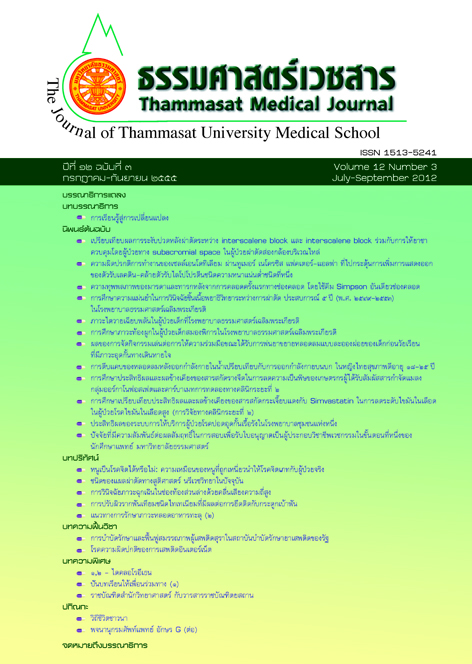Combination of Patient Controlled Subacromial Levobupivacaine Infusion and Interscalene Block: an Alternative Technique in Pain Relief after Shoulder Arthroscopy
Keywords:
Subacromial infusion, Interscalene block, Postoperative analgesia, Shoulder arthroscopAbstract
Objective: The purpose of this study was to evaluate the effi cacy of subacromial infusion combined with interscalene block for postoperative pain control after arthroscopic shoulder surgery.
Methods: Forty patients underwent arthroscopic shoulder surgery participated in this prospective study and were randomized into 2 groups: patient-controlled subacromial levobupivacaine infusion combined with interscalene block (group ISB-SA) and interscalene block alone (group ISB-NSS). Interscalene blocks with 20 ml of 0.5% levobupivacaine were performed preoperatively and infusion catheters were placed in the subacromial space before the end of surgery on all patients. In the group ISB-SA, the infusion catheter was infused with 0.25% levobupivacaine, whereas, in the group ISB-NSS, it was infused with NSS both by PCA pumps. All pumps were programmed with a continuous basal rate 5 ml/hr, and on demand 5 ml bolus with a 30-minute lockout time for 24 postoperative hours. Visual analog scale (VAS) data was collected immediately after the operation and at 1, 8, and 24 hours postoperatively. Additional medication required for pain, side effects and patient satisfaction were evaluated.
Results: There were no statistically signifi cant differences (P>0.05) either in VAS at any time interval or total cumulative morphine consumption between the two groups. After the analgesic effect of ISB had worn off, more than 70% of the patients in both groups still reported suboptimal postoperative pain control. The side effects and patient satisfaction in postoperative pain control between both groups was not different.
Conclusions: The patient-controlled subacromial levobupivacaine infusion combined with interscalene block did not provide more pain relief than interscalene block alone. Subacromial infusion did not enhance the postoperative analgesic effect after the block wore off.
Key words: Subacromial infusion, Interscalene block, Postoperative analgesia, Shoulder arthroscopy



